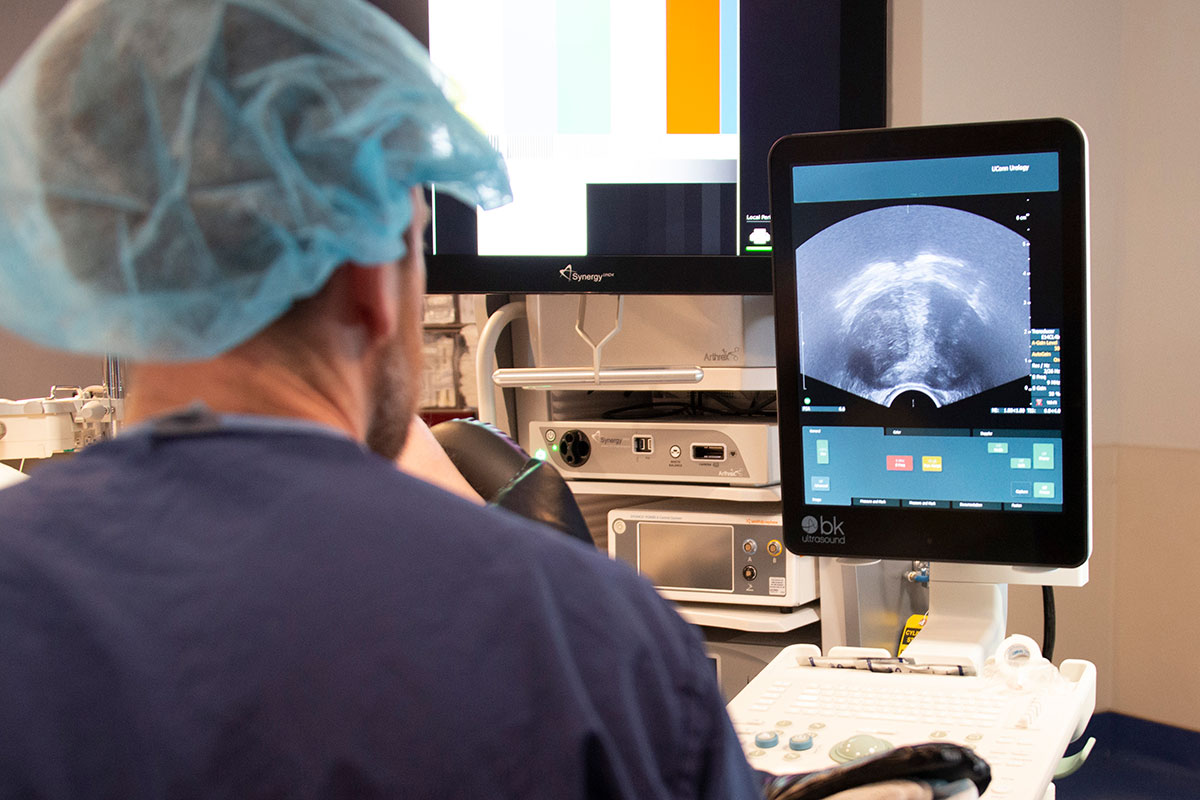In the fast-moving world of detecting and treating prostate cancer, UConn Health urologists are providing the latest approach to taking a biopsy.
Prevailing thought on when – or if – a prostate biopsy is necessary varies by patient and doctor. When the time does come, this new method – transperineal prostate biopsy – offers distinct advantages in safety and precision.
Historically, urologists would use a needle that pierces the rectal wall to take a biopsy of the prostate. Known as a transrectal biopsy, the procedure carries a small but real risk of infection. Roughly three out of every 100 men who undergo a transrectal biopsy end up in the intensive care unit with sepsis, a potentially life-threatening condition related to the body’s response to infection.

“The other problem with the transrectal approach is the difficulty accessing some portions of the prostate,” says Dr. Peter Albertsen, chief of UConn Health’s Division of Urology. “The angle of the biopsy needle traversing the probe makes it hard to hit the apex of the prostate. With the transperineal approach, we are finding it much easier to access regions of the prostate which historically have been difficult to reach with a transrectal probe.”
With transperineal biopsy, the needle that retrieves the tissue sample goes not through the rectum, but the soft tissue just outside and past it.
“The prostate is right on the other side of that soft tissue, in other words, you’ve got skin, pelvic floor muscle, and the next thing there is your prostate,” Albersten says. “Fortunately there are no nasty blood vessels, there are no nasty nerves, and it’s a straight shot to get there. And by not going through the rectum, we anticipate the risk of sepsis going to zero.”
Albertsen and Dr. Ben Ristau, UConn Health’s surgical director of urologic oncology, are among a small group of urologists in the region who offer transperineal prostate biopsy, guided by the latest in ultrasound technology that provides a clear, real-time view.
Patients are heavily sedated for the procedure. Albertsen likens it to a colonoscopy, in that the patient wakes up and goes home, and returns to work the next day.
“There has been little bleeding and no infections since we transitioned to the perineal approach,” Albertsen says of the patients he’s biopsied this way so far.
Biopsy remains one option for when prostate cancer is suspected. Often it is not necessary, and other modalities to monitor the prostate are available. For example, use of an imaging method called multi-parametric MRI, which Albertsen brought to UConn Health seven years ago, already is the standard of care for screening in other parts of the world, and it’s moving in that direction in the U.S.



